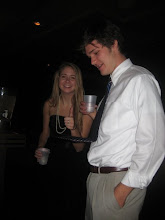
This photograph, taken by photographer Abelardo Morell and titled Houses Across the Street in Our Bedroom, captures the essence of modern art via camera obscura. This simplified version of a natural camera occurs when light reflecting from illuminated objects passes through a minute hole (called a pinhole) into a darkened area and projects an inverted, but exact, image of that object. Recorded history tells us that people have known about camera obscuras since ancient times (Aristotle first recorded this phenomenon around 330 BC when he observed a projection of the sun during an eclipse after the light had penetrated through small holes between the leaves of a tree.) Throughout time, people developed devices that used the camera obscura to aid in drawing (so that a projected image could be traced); Leonardo da Vinci designed a dark chamber in 1490 that employed the camera obscura and became the prototype of the photographic camera. However, it was not until the work of Niepce, Daguerre, Talbot, Herschel and others during the early to mid 1800s that images created by cameras could be permanently captured. Since that time, many advances have occurred in the field of photography, but we still owe the possibility of our modern cameras to the discovery of the camera obscura.
We make use of camera obscuras during each waking moment; our eyes serve as automatic camera obscuras that provide us with vision (light enters the pupil, travels through the lens, is projected onto the retina upside down, and is sent through the optic nerve to be processed by the brain). Camera obscuras have also been the objects of tourist attraction in the past; the Garden of the Gods in Colorado features a naturally occurring camera obscura, and Rock City in Chattanooga, Tennessee attracted visitors with a camera obscura during 1960's and early 1970's.
When we view modern work by artists such as Abelardo Morell, it is easy to lose ourselves in the sort of "fantasy worlds" that they capture with created landscapes and projected camera obscuras. The images that they create are impressive and rich in detail. It's all too ironic though, when we consider that the camera obscura is the most simplified version of a camera. With this image by Morell, the viewer is confronted by both ancient and modern, and it is beautiful.

No comments:
Post a Comment